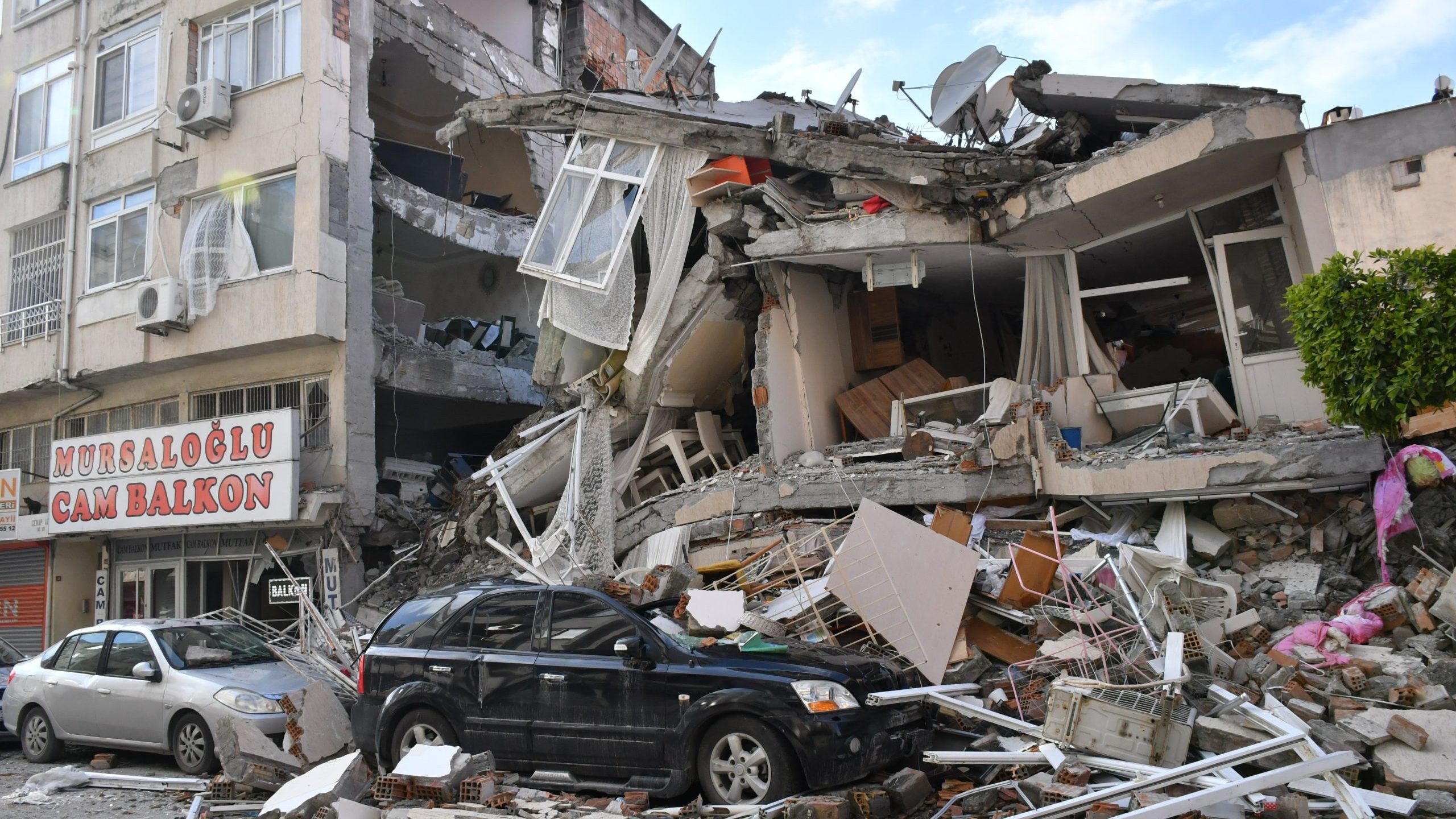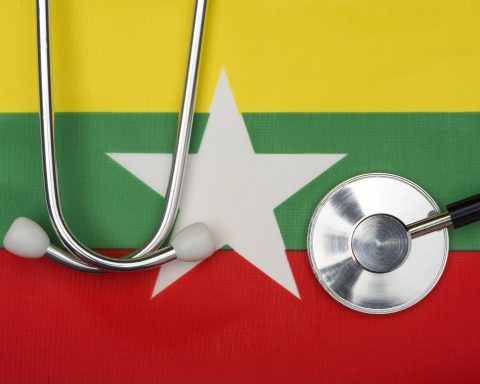
This report is sent from Gaziantep, southeast Türkiye. The town’s name is omitted for security reasons.
A 7.8 magnitude earthquake struck southeast Türkiye near the Syrian border on 06 February 2023 at 4:17am local time, with its epicentre near Nurdağı and Gaziantep in Gaziantep Province.1 A second earthquake of 7.7 magnitude subsequently struck the same region 100 kilometres to the north of the first epicentre later the same day.2 Over 11,000 aftershocks have since been recorded in the region, and over 191,800 buildings (around 13.8% of those assessed) have collapsed, been heavily damaged, or been otherwise rendered inhabitable and in urgent need of demolition.3 Tragically, over 1,400 deaths have been reported in the Government-controlled areas of Syria (a substantially larger number is predicted to have been sustained in territories controlled by other actors),2 and over 45,000 deaths and 115,000 injuries have been reported in Türkiye.3
An estimated 9.1 million people have been directly affected by the earthquakes, including 3.2-3.8 million who have been displaced due to the resulting loss of suitable shelter, disruption to water, sanitation and hygiene (WASH) facilities, and deficiencies in food security, along with interruptions to the provision of health services, education and livelihoods.3 In the context of Türkiye, although 42,000 Syrian refugees have re-entered Syria,3 the majority of displaced individuals remain within Türkiye as internally-displaced people (IDP). While 1.0-1.3 million have left their original province by their own means, and a further 617,600 IDP now shelter across Türkiye as government-coordinated evacuees, 1.6 million IDP are displaced within their original province and temporarily reside in government-coordinated displacement sites (constituting tent/container cities and emergency shelters in public buildings), informal/makeshift settlements, or private solutions.3 Some 484 government-coordinated tent/container cities, which collectively house 1.4 million IDP, have been established across 11 affected provinces, while 85,000 IDP reside in government-coordinated community shelters such as universities and dormitories.3
The vast majority of formal displacement sites have been established within urban areas, due to their proximity to and accessibility for large populations of affected people.
Substantial attention has rightly been focused on the living conditions within these temporary settlements which, in addition to the stresses exerted by the natural disaster, pose substantial challenges to the physical and mental health,4 protection and wellbeing of those they contain,5 particularly children and adolescents.6 Overcrowded tents, containers and community shelters located within densely populated displacement sites, and inadequate provision of suitable WASH facilities, increase the likelihood of communicable disease outbreaks,7 while accessible health facilities are often suboptimal,3 and the need for safe spaces, such as gender-segregated facilities designed to minimise child protection and gender-based violence risks, has been frequently identified.3 However, the formal concentration of IDP into such centralised sites enables the mass provision of urgently needed shelter, food security and heating fuel for hundreds of thousands of displaced individuals, and serves to protect them from the immediate consequences of the disaster, including exposure to severe winter weather conditions.
The vast majority of formal displacement sites have been established within urban areas, due to their proximity to and accessibility for large populations of affected people. In contrast, the sparsely populated rural and remote areas of affected provinces, coupled with the precarious and earthquake-damaged transport infrastructure that supplies them, has allowed the construction of very few formal displacement sites within these areas. Concurrently, those residing in the country’s rural and remote areas experience both the highest rates of poverty (estimated to be around 34.6%)8 and the poorest health outcomes (increasingly those due to non-communicable diseases)9 across Türkiye. Accordingly, many such people who have been affected by the earthquakes lack the means to relocate to formal displacement sites, and are often unwilling to abandon their damaged property.3 Consequently, they are denied access to the vital provisions that are exclusively distributed at these centralised points.
The tragic unfairness of this situation should be urgently recognised and addressed by the public health, humanitarian, and clinical healthcare communities worldwide.
As such, it is those individuals who reside in rural and remote areas of provinces affected by the earthquakes – particularly those who have been unable to relocate to formal displacement sites in urbanised settlements – that bear the greatest burden of disease and associated health needs, rather than those who inhabit such sites. Paradoxically, it is this same group to which the provision of shelter, food security and healthcare is most challenging and least accessible, thereby creating a variant of the inverse care law in the context of natural disaster.10
The tragic unfairness of this situation should be urgently recognised and addressed by the public health, humanitarian, and clinical healthcare communities worldwide. The steepness of the existing social gradient in Türkiye, and its powerful influence on fundamental health outcomes, has been markedly steepened by the effects of the earthquakes. Accordingly, urgent, coordinated, multiagency action is required to secure the delivery of essential humanitarian components – including high quality health care – to the people of Türkiye who need it most.
References
- H Khan. The Turkey and Syria Earthquake. ReliefWeb. 13 February 2023. https://reliefweb.int/report/turkiye/turkey-and-syria-earthquake [accessed 05 March 2023]
- ReliefWeb. Situation Report: Syria Earthquake March 2023 Government-Controlled Areas, Bi-Weekly Highlights – 03/03/2023. https://reliefweb.int/report/syrian-arab-republic/syria-earthquake-march-2023-government-controlled-areas-bi-weekly-highlights-03032023 [accessed 05 March 2023]
- ReliefWeb. Situation Report: Türkiye Earthquake February 2023, Bi-weekly Highlights – 03/03/2023. https://reliefweb.int/report/turkiye/turkiye-earthquake-february-2023-bi-weekly-highlights-03032023 [accessed 04 March 2023]
- G Kurt, E Uygun, AT Aker, et al. Addressing the mental health needs of those affected by the earthquakes in Türkiye. The Lancet Psychiatry 01 March 2023. DOI: 10.1016/S2215-0366(23)00059-7
- ReliefWeb. Turkey-Earthquake: Emergency Situation Report (03.03.2023). 04 March 2023. https://reliefweb.int/report/turkiye/turkey-earthquake-emergency-situation-report-03032023 [accessed 05 March 2023]
- A El-Khani, R Calam, L Cluver, et al. Urgent help needed for children affected by the earthquake in Syria and Türkiye. The Lancet Psychiatry 01 March 2023. DOI: 10.1016/S2215-0366(23)00060-3
- YS Selman. Turkey earthquake: Lack of clean water and toilets puts survivors at risk of disease. Middle East Eye 15 February 2023. https://www.middleeasteye.net/news/turkey-earthquake-lack-clean-water-toilets-survivors-risk-disease [accessed 05 March 2023]
- United nations Development Programme. Turkey: Integrated Local Rural Development. 2011. https://www.undp.org/sites/g/files/zskgke326/files/publications/Turkey(2011nov)_Web.pdf [accessed 05 March 2023]
- World Health Organization Regional Office for Europe. Better non-communicable disease outcomes: challenges and opportunities for health systems. Turkey Country Assessment. 2014. https://www.euro.who.int/__data/assets/pdf_file/0011/248285/BetterNCDoutcomesChallengesOpportunitiesHealthSystemsTurkeyCountryAssessmentEng.pdfc [accessed 05 March 2023]
- JT Hart. The inverse care law. The Lancet 1971; 297: 405-412. DOI: 10.1016/S0140-6736(71)92410-X
Featured photo by Çağlar Oskay on Unsplash








